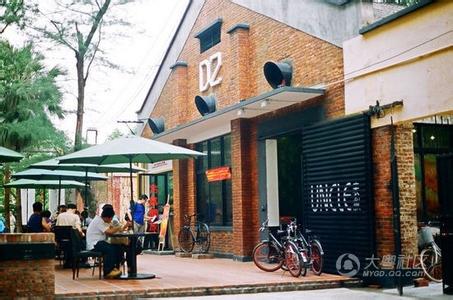Introduction to the Grinding scale of Tarazhu Coffee beans in Costa Rica
Introduction to the Grinding scale of Tarazhu Coffee beans in Costa Rica
In the six general elections from 1953 to 1978, the National Liberation Party won four times. During its reign, the party emphasized state intervention in the economy, nationalization of some industries, increased import taxes to protect national industries, forced United Fruit companies to increase income tax, strengthened relations with other Latin American countries and Western Europe, changed the situation of relying solely on the United States, joined the Central American Common Market in 1963, and established diplomatic relations with the Soviet Union and some Eastern European countries from 1940 to 1948 in the 1970s. Calderon Guardia and T. The two governments of Picardo were intimidated by the people's Democratic Movement and adopted some democratic reform measures under the promotion of the people's Vanguard Party.
Costa Rica has a deep coffee culture, superb coffee skills, and produces world-class high-quality coffee. Costa Rica is an excellent coffee producer, both in terms of its innate environmental advantages and its acquired efforts to produce quality coffee. Although Costa Rica ranks third from the bottom in terms of land area in Central America, its economic environment is better than that of half of the countries. Colombians say that it is coffee that has changed the country and enabled people to enjoy a rich environment. Coffee has indeed made an outstanding contribution to this country, and it is the hard-working coffee people who have created excellent coffee.
At present, the Tarazhu Cooperative has 26 member estates. Among them, Raminita Manor, which is one of the most famous coffee farms in Tarazu. La Minita produces about 1 million pounds of coffee beans a year, and after the entire estate produces coffee beans that are carefully selected to remove defects, only 15 per cent of the coffee beans can bear the mark of the Laminita estate, while the rest enter the coffee market. But the prices of these coffees entering the market are still higher than those of other beans produced in Central America. Raminita's strict management of all aspects of coffee production has established a world-class reputation and can be called a world-famous coffee farm.
The copyright belongs to the author. Commercial reprint please contact the author for authorization, non-commercial reprint please indicate the source. Among the many excellent producing areas in Costa Rica, there is a famous producing area that stands out-Tarazu (Tarrazu), also known as Tarasu. Tarazhu is very famous in the world of boutique coffee and is one of the major coffee producing areas in the world. In the 2014 COE competition, of the 23 beans on the list, 17 came from Tarasu. Tarasu is located in the fertile volcanic region of Central America, which has a humid climate and fertile volcanic soil, abundant rainfall throughout the year, high altitude, and dense forest natural shade, providing a unique growth environment for coffee growth. Pesticides or artificial fertilizers are not used in the planting process. Nearly 95% of the coffee beans produced in Tarazhu Alpine are very hard beans (SHB), which generally grow above 1500 meters above sea level.

Important Notice :
前街咖啡 FrontStreet Coffee has moved to new addredd:
FrontStreet Coffee Address: 315,Donghua East Road,GuangZhou
Tel:020 38364473
- Prev

Description of planting Environment and Flavor of Sumatran Coffee Bean
Sumatran Coffee Bean growing Environment Flavor description of the growing area varieties introduce tall trees with bright red pointed leaves and long red cherries. It is generally a natural hybrid variety of iron pickup. Planting area Lake Toba, Aceh. The Netherlands brought this variety to be planted at high elevations on the island of Sumatra. After losing it for a while, the seed was restarted on an organic farm in Lake dopa.
- Next

Description of Manor Flavor of Coffee Bean Grinding scale varieties in Jinchu Valley, Kenya
Kenya Jinchu Coffee Bean Grinding scale varieties taste manor flavor description manor beans or small farm beans are better? There is no absolute answer to this question, Joseph said. Because the Kenyan coffee industry is made up of 75% of smallholder cultivation and 25% of manor cultivation. Compared with small farmers, manor planting has the advantages of advanced technology and unified management.
Related
- Detailed explanation of Jadeite planting Land in Panamanian Jadeite Manor introduction to the grading system of Jadeite competitive bidding, Red bid, Green bid and Rose Summer
- Story of Coffee planting in Brenka region of Costa Rica Stonehenge Manor anaerobic heavy honey treatment of flavor mouth
- What's on the barrel of Blue Mountain Coffee beans?
- Can American coffee also pull flowers? How to use hot American style to pull out a good-looking pattern?
- Can you make a cold extract with coffee beans? What is the right proportion for cold-extracted coffee formula?
- Indonesian PWN Gold Mandrine Coffee Origin Features Flavor How to Chong? Mandolin coffee is American.
- A brief introduction to the flavor characteristics of Brazilian yellow bourbon coffee beans
- What is the effect of different water quality on the flavor of cold-extracted coffee? What kind of water is best for brewing coffee?
- Why do you think of Rose Summer whenever you mention Panamanian coffee?
- Introduction to the characteristics of authentic blue mountain coffee bean producing areas? What is the CIB Coffee Authority in Jamaica?

